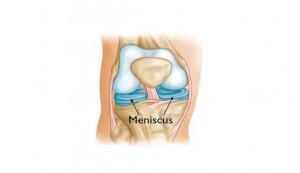Medial or Lateral Meniscectomy
The Medial and Lateral Meniscectomy are crescent-shaped bands of thick, rubbery cartilage attached to the shinbone (tibia). They act as shock absorbers and stabilize the knee. Meniscus tears can vary widely in size and severity. A meniscus can be split in half, ripped around its circumference in the shape of a C or left hanging by a thread to the knee joint. A barely noticeable tear may resurface years later, triggered by something as simple as tripping over a sidewalk curb.
The medial meniscus is on the inner side of the knee joint, and the lateral meniscus is on the outside of the knee.
Preparation for Medial or Lateral Meniscectomy
Preparations depend on your surgeon. In general, you should:
- Avoid certain medications. Your doctor may want you to avoid taking medications or dietary supplements that can increase your risk of bleeding.
- Fast beforehand. Depending on the type of anesthesia you’ll have, your doctor may want you to avoid eating, or drinking six to twelve hours before your procedure.
- Arrange for a ride. You won’t be allowed to drive yourself home after the procedure, so make sure someone will be available to pick you up. If you live alone, ask someone to check on you that evening or, ideally, stay with you the rest of the day.
- Choose loose clothing. Wear loose, comfortable clothing baggy gym shorts, slip on shoes for example, if you’re having knee arthroscopy so you can dress easily after the procedure
Medial and lateral Meniscectomy Surgery
The procedure calls for very little meniscus arthroscopy preparation. The procedure is as follows:
- The patient is usually put under general anesthesia.
- Two small snips are made to the skin at the joint to allow for the insertion of the video camera and the instruments.
- A special fluid is pumped into the joint to aid in visualization. Although not dangerous, excess fluid in the joint can result in edema (fluid retention).
- The surgery is performed and the incisions stitched
Medial and Lateral Meniscectomy Recovery
Recovery time after Medial and Lateral Meniscectomy surgery is generally very short, requiring only about four to six weeks. The joint can be moved almost immediately after surgery, although a certain amount of stiffness and pain is expected. Many minor surgeries can have the person walking in three to four days after surgery. .
Risks for Medial and Lateral Meniscectomy Surgery
As with any surgical procedure, complications can occur. Some possible complications may include, but are not limited to, the following:
- Bleeding into the knee joint.
- Damage to the cartilage, meniscus, or ligaments in the knee.
- Formation of a blood clot in the leg.
- Injury to a blood vessel or nerve.
- Infection in the knee joint.
- Knee stiffness following the procedure.
- Compartment syndrome.
Medial and Lateral Meniscectomy surgery is generally well-tolerated and does not usually cause complications. But there is a small risk of damaging the nerves during surgery.
There is a direct relationship between the amount of meniscus tissue that is surgically removed and the load distribution across the knee. If more tissue is removed, the knee is less able to sustain the load of walking, running, or other activities. With uneven load distribution, degeneration of the knee joint may happen at a faster pace than it would with an intact meniscus.
In any surgery, there is risk of infection or bleeding. And there are risks with general or regional anesthesia.

